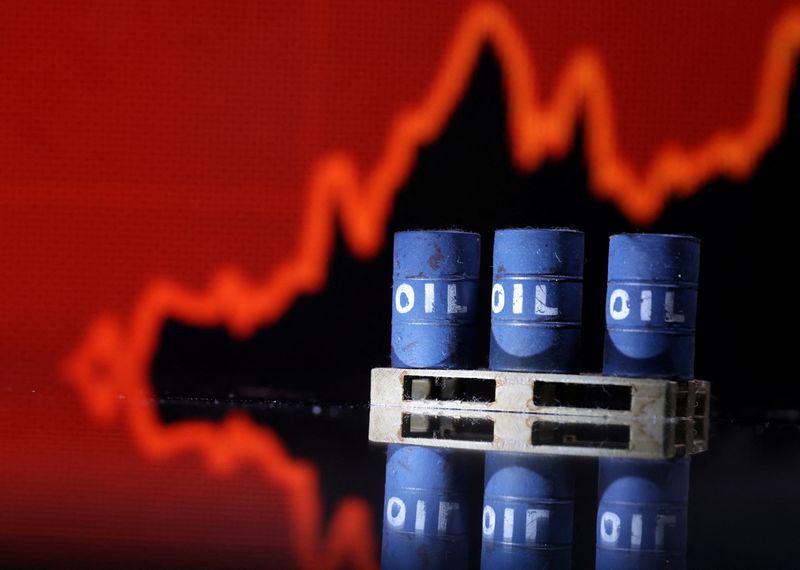Commodities
Oil prices edge higher as markets weigh demand against US inventories

By Paul Carsten
LONDON (Reuters) -Oil prices rose slightly on Thursday as investors factored in firm winter fuel demand expectations despite large U.S. fuel inventories and macroeconomic concerns.
futures were up 35 cents, or 0.5%, at $76.51 a barrel by 1246 GMT. U.S. West Texas Intermediate crude futures gained 30 cents, or 0.4%, to $73.62.
Both benchmarks fell more than 1% on Wednesday as a stronger dollar and a bigger than expected rise in U.S. fuel stockpiles pressured prices.
“The oil market is still grappling with opposite forces – seasonal demand to support the bulls and macro data that supports a stronger U.S. dollar in the medium term … that can put a ceiling to prevent the bulls from advancing further,” said OANDA senior market analyst Kelvin Wong.
JPMorgan analysts expect oil demand for January to expand by 1.4 million barrels per day (bpd) year on year to 101.4 million bpd, primarily driven by increased use of heating fuels in the Northern Hemisphere.
“Global oil demand is expected to remain strong throughout January, fuelled by colder than normal winter conditions that are boosting heating fuel consumption, as well as an earlier onset of travel activities in China for the Lunar New Year holidays,” the analysts said.
The market structure in Brent futures is also indicating that traders are becoming more concerned about supply tightening at the same time demand is increasing.
The premium of the front-month Brent contract over the six-month contract reached its widest since August on Wednesday. A widening of this backwardation, when futures for prompt delivery are higher than for later delivery, typically indicates that supply is declining or demand is increasing.
Nevertheless, official Energy Information Administration (EIA) data showed rising gasoline and distillates stockpiles in the United States last week. [EIA/S]
U.S. President Joe Biden is expected to announce new sanctions targeting Russia’s economy this week, according to a U.S. official. The move is part of efforts to bolster Ukraine’s war effort against Russia before President-elect Donald Trump takes office on Jan. 20. A key target of sanctions so far has been Russia’s oil industry.

The dollar strengthened further on Thursday, underpinned by rising Treasury yields ahead of Trump’s entrance into the White House.
Looking ahead, is expected to oscillate within a range of $67.55 to $77.95 into February as the market awaits more clarity on Trump’s administration policies and fresh fiscal stimulus measures out of China, OANDA’s Wong said.
Commodities
Oil prices rise; U.S. crude inventories plunge, Russia-Ukraine truce eyed
Commodities
India’s Reliance to stop buying Venezuelan oil over US tariffs, sources say
Commodities
Oil prices climb on Venezuela supply worries

 Forex3 years ago
Forex3 years agoForex Today: the dollar is gaining strength amid gloomy sentiment at the start of the Fed’s week

 Forex3 years ago
Forex3 years agoUnbiased review of Pocket Option broker

 Forex3 years ago
Forex3 years agoDollar to pound sterling exchange rate today: Pound plummeted to its lowest since 1985

 Forex3 years ago
Forex3 years agoHow is the Australian dollar doing today?

 Cryptocurrency3 years ago
Cryptocurrency3 years agoWhat happened in the crypto market – current events today

 World3 years ago
World3 years agoWhy are modern video games an art form?

 Commodities3 years ago
Commodities3 years agoCopper continues to fall in price on expectations of lower demand in China

 Economy3 years ago
Economy3 years agoCrude oil tankers double in price due to EU anti-Russian sanctions























